Protea eximia
| Botanical Name | Protea eximia |
|||||||||||||||||||||
| Family | Proteaceae - The Protea family
|
|||||||||||||||||||||
| Pronunciation | PRO-tee-uh eks-IM-mee-uh |
|||||||||||||||||||||
| Common Name(s) |
English: Broad-leaved Sugarbush; Duchess Protea
Afrikaans: Breëblaar-suikerbos; Swartberg Protea
|
|||||||||||||||||||||
| Plant Group |
|
|||||||||||||||||||||
| Plant Size |
|
|||||||||||||||||||||
| Position |
|
|||||||||||||||||||||
| General Information |
|
|||||||||||||||||||||
| Specific Information | Protea eximia is a large, upright, single stemmed shrub with a lanky, sparsely branched growth habit. The greyish to purplish green foliage consists of smooth, leathery, egg-shaped leaves which have a floury coating. This protea tolerates acidic and alkaline soils and grows in areas with some snow and light frost. It has a wide distribution range, growing in habitats that receive between 380 - 1000 mm of rain annually. It has a life-span of 20 - 30 years and will flower four to five years from germination. It is one of the easier proteas to grow and a good species for the beginner and for gardens out of its natural habitat. |
|||||||||||||||||||||
| Ad Break | ||||||||||||||||||||||
| Flowers | ||||||||||||||||||||||
| Description | large oblong heads of small tightly packed flowers tipped with purplish to blackish velvety hairs, surrounded by brightly coloured spoon-shaped bracts |
|||||||||||||||||||||
| Season |
|
|||||||||||||||||||||
| Colour |
|
|||||||||||||||||||||
| Growth Rate |
|
|||||||||||||||||||||
| Plant Uses |
|
|||||||||||||||||||||
| Distribution and Habitat | from Worcester in the Western Cape to near Port Elizabeth in the Eastern Cape, on mountain ranges from 200–1 600 m above sea level, on sandstone slopes, among dense moist fynbos with mild climates to sparse arid fynbos with cold, dry climates |
|||||||||||||||||||||
| Planting Suggestions | Plant Protea eximia in very well-drained, nutrient poor soil in a sunny, airy position. They will not grow well in clay soils and will die if their roots are kept wet. If possible plant on a slope or on slightly elevated mound to prevent drainage problems. In the cooler summer rainfall regions try for a north facing slope. Dig a hole twice the width of the container and one and a half times the height. Do not apply artificial fertilizer or fresh manure to the soil mix. Mulch well around the plant but keep the area around the trunk of the plant clear, as the crown of the plant must be able to dry off. Proteas have a dense network of fine roots just below the surface of the soil and no cultivation should take place below them as disturbance will damage the roots and possibly introduce fungal disease, resulting in the death of the plant. The use of a thick mulch of leaf litter and pine bark/needles will feed the plant, keep the soil cool and discourage weeds. Water well throughout the year but particularly during autumn-winter-spring. Always water in the early morning, preferably before the sun has fully risen. Tip young plants regularly to encourage branching. Remove the spent flower heads immediately after flowering to encourage a more compact bush. If growing Protea from seed, see this blog: http://kumbulanursery.co.za/blog/obtaining-and-growing-protea-seeds For more information about growing and care of Protea go to http://finebushpeople.co.za Most Protea losses are due to fungal diseases and by the time you notice the plant is in stress, it is usually too late to do anything to save the plant. The best control is preventative: water plants early in the morning; keep soil surface cool by mulching; do not over-fertilise, remove diseased plants immediately; do not over water in summer and never disturb the roots. Burn any diseased material. |
|||||||||||||||||||||
| Medicinal Uses | No data found. |
|||||||||||||||||||||
| Ad Break | ||||||||||||||||||||||


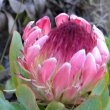
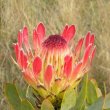
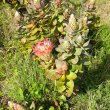
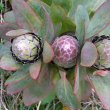
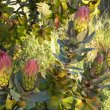
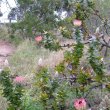

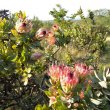


Discuss this plant
Share knowledge, ask a question or give an experience.